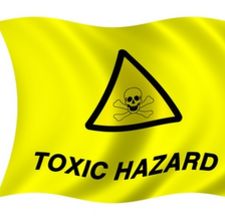A team of Northwestern University scientists including a member of our Institute team met October 18, with Environmental Protection Agency (EPA)in Washington, D.C., to advocate for important changes in the agency’s guidelines for reproductive health research.
“The problem is current research assessing the risk of toxins on reproductive health is not being uniformly investigated in both sexes and across the lifespan,” said Kate Timmerman, program director of the Oncofertility Consortium at Northwestern University. The reproductive health guidelines have not been updated since 1996 and need to be revised to reflect new research findings.
The Northwestern team asked the EPA to expand the definition of reproductive health beyond pregnancy to include the lifespan of an individual.
“Reproductive health is important across the entire lifespan because your endocrine system affects your bone health, cardiovascular health, and other systems in the body,” Timmerman said. Endocrine disrupters, sometimes triggered by environmental factors, can lead to increased risk for stroke and heart attack as well as osteoporosis.
The Northwestern scientists also requested that all EPA-sponsored research require appropriate testing in both sexes. Currently many toxicity studies are only conducted in male animal models with the assumption that females are affected the same way, but that isn’t necessarily true.
“What happens now is if researchers don’t see an effect in males, they won’t look in females,” Timmerman said. “But we know certain toxins in the environment can have a significant effect on females and not males and vice versa.”
Timmerman and colleagues presented a white paper to the EPA on how to improve and update the guidelines. See our previous blog for more details.
In addition to Timmerman, other Northwestern scientists meeting with the EPA include Kimberly Gray, professor of civil and environmental engineering at Northwestern's McCormick School of Engineering and Applied Science; Mary Ellen Pavone, MD, assistant professor of obstetrics and gynecology at Northwestern University Feinberg School of Medicine and a physician at Northwestern Memorial Hospital; and Francesca Duncan, reproductive scientist/research associate in the lab of Teresa Woodruff, PhD, chief of fertility preservation at Feinberg and director of the Oncofertility Consortium. Woodruff is also the founder and director of the Women's Health Research Institute at Northwestern who host this blog site.
Author: Marla Paul , Northwestern NewsCenter

 Eight substances were added to the
Eight substances were added to the